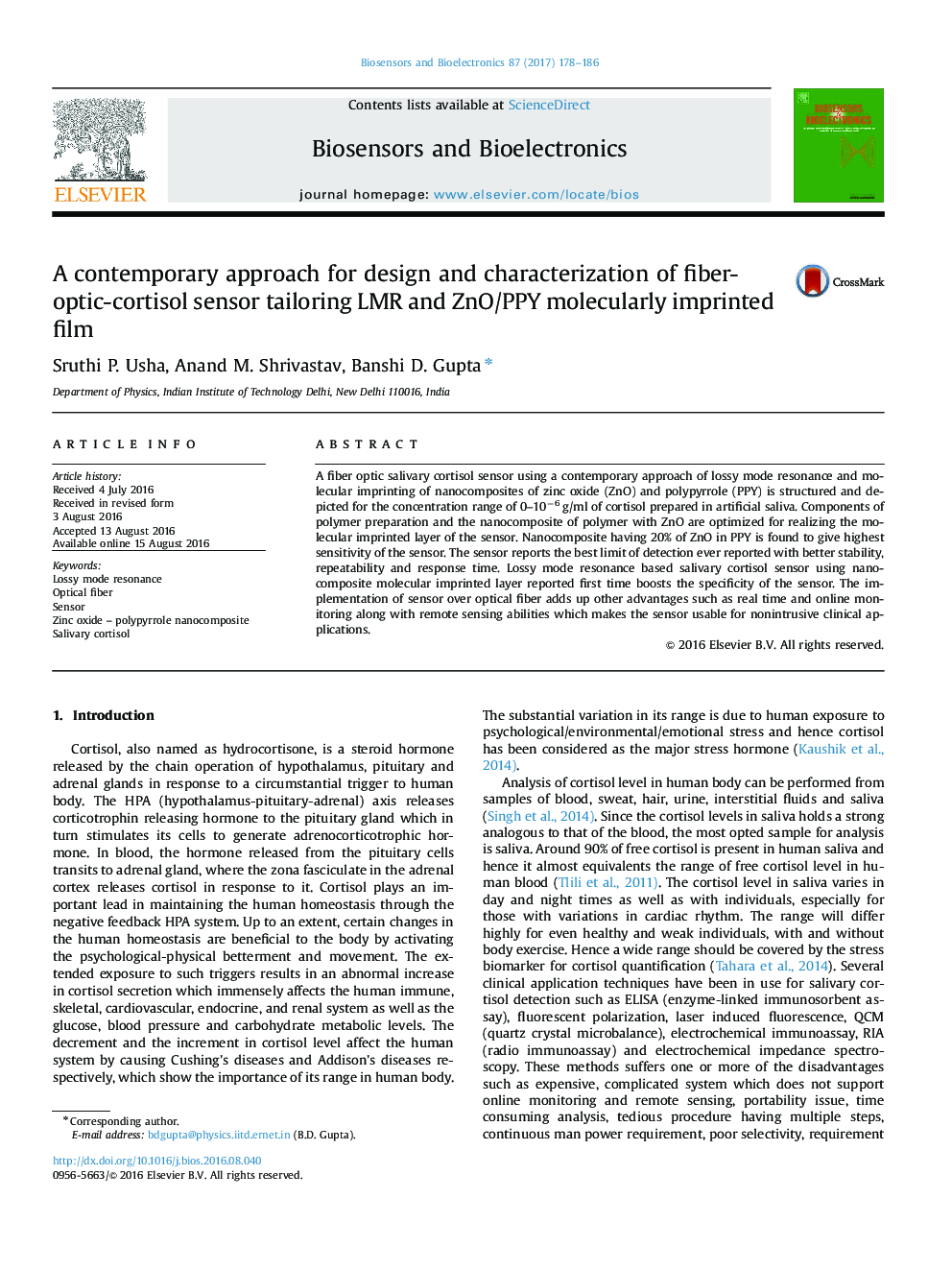| Article ID | Journal | Published Year | Pages | File Type |
|---|---|---|---|---|
| 866176 | Biosensors and Bioelectronics | 2017 | 9 Pages |
•Tailoring LMR & MIP methods in a contemporary way for salivary cortisol detection.•A nanocomposite of ZnO and PPY is used to realize molecular imprinted layer.•ZnO/( 20% ZnO/PPY) over fiber core depicts the optimized sensor probe.•Optimizations performed to achieve the sensor with the best LOD – 25.9 fg/ml.•Online monitoring and real time sensing facilities support clinical applications.
A fiber optic salivary cortisol sensor using a contemporary approach of lossy mode resonance and molecular imprinting of nanocomposites of zinc oxide (ZnO) and polypyrrole (PPY) is structured and depicted for the concentration range of 0–10−6 g/ml of cortisol prepared in artificial saliva. Components of polymer preparation and the nanocomposite of polymer with ZnO are optimized for realizing the molecular imprinted layer of the sensor. Nanocomposite having 20% of ZnO in PPY is found to give highest sensitivity of the sensor. The sensor reports the best limit of detection ever reported with better stability, repeatability and response time. Lossy mode resonance based salivary cortisol sensor using nanocomposite molecular imprinted layer reported first time boosts the specificity of the sensor. The implementation of sensor over optical fiber adds up other advantages such as real time and online monitoring along with remote sensing abilities which makes the sensor usable for nonintrusive clinical applications.
